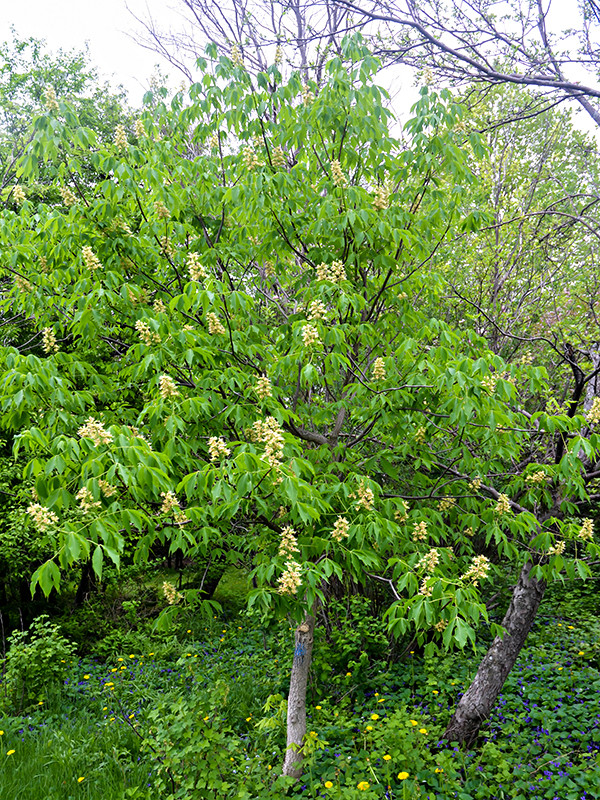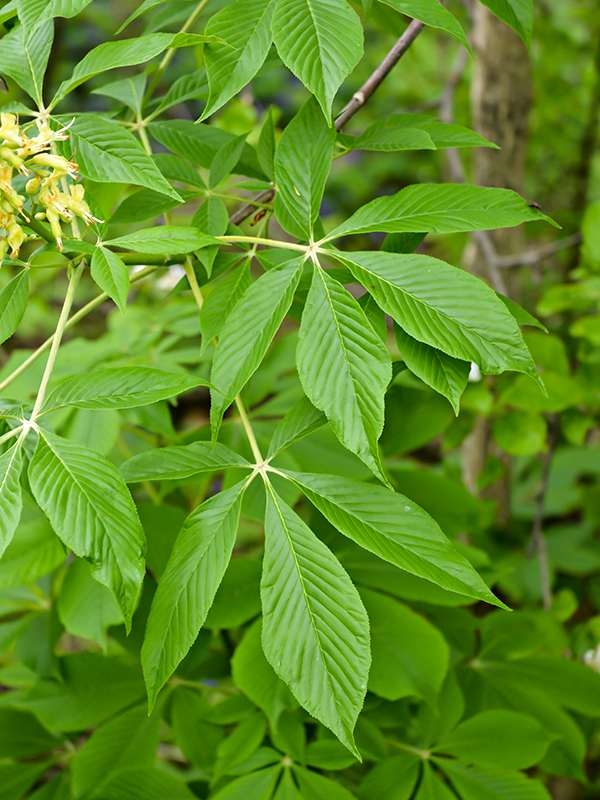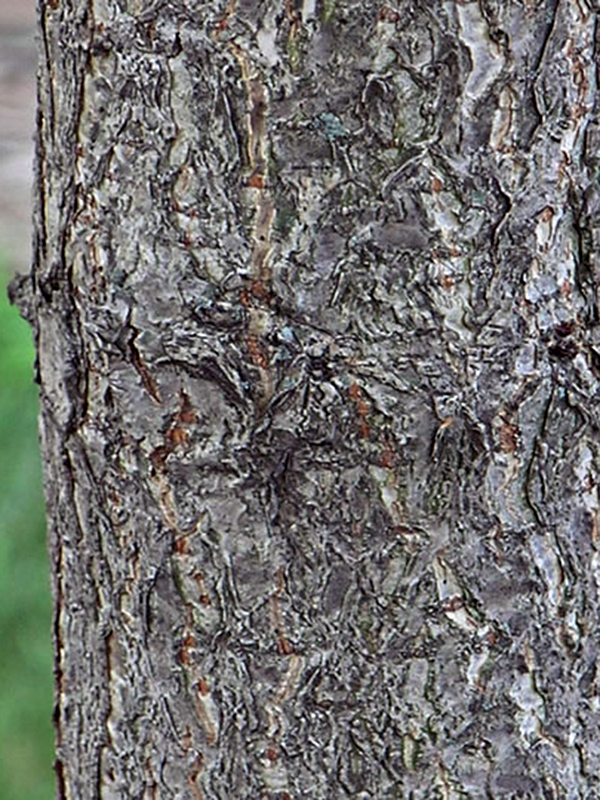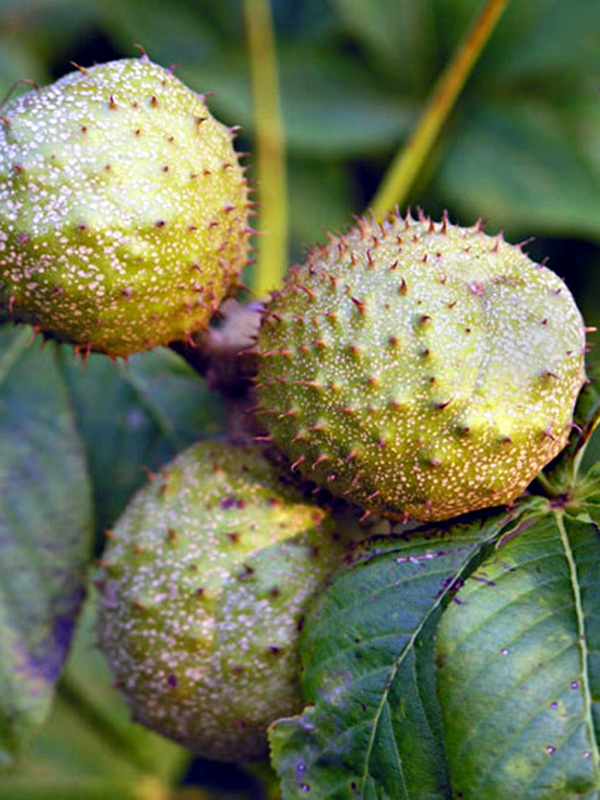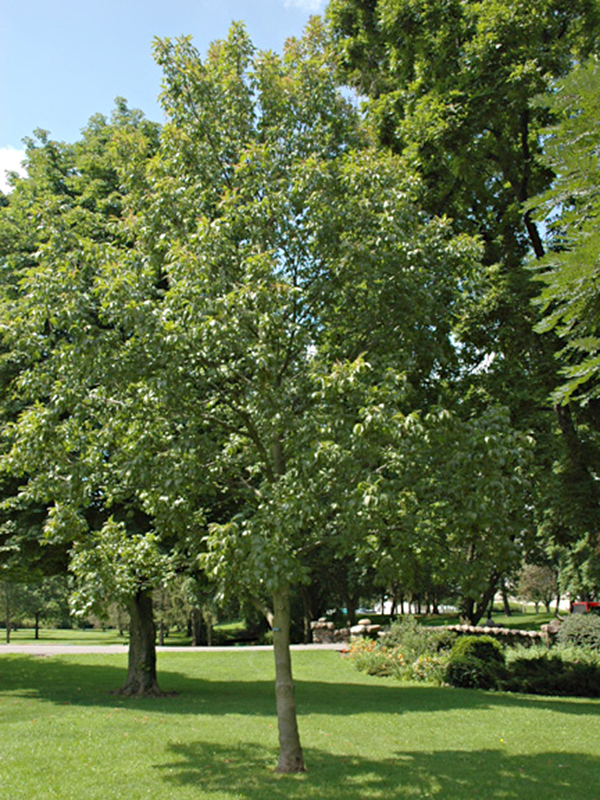| General Description | Very rounded, broad form with low growing branches. Very dense light-dark green foliage, medium-coarse in leaf, with orange autumn colour. Small green-yellow flowers are borne in panicles. Bark is grey and fissured. The fruit is light brown, prickly, and dehiscent. |
| ID Characteristic | Disinctive shiny green palmate leaves turn vibrant orange in autumn. Aesculus glabra is the only American Buckeye with prickly fruit. |
| Shape | Rounded, broad, sometimes conical, and very dense. Pyramidal-rounded to oval-rounded in youth. |
| Landscape | A tree better left in it’s natural environment, Aesculus glabra is a good tree for parks, potentially golf courses and other large areas, but not a great street tree and would not be suited for a small residential landscape. |
| Propagation | Seed should be stratified in a moist medium for 120 days at 5°C. Aesculus seeds should be collected when seeds show signs of dehiscence. Seeds are best sown in autumn; cover seeds with a depth equal to the seeds size. |
| Cultivation | Aesculus glabra is an easily grown tree given well drained, loamy type soils. |
| Pests | Antracnose is the most serious disease afflicting the glabra species. Powdery mildew, leaf spot, wood rot, canker, leaf blotch, Comstock mealy bug, Japanese beetle, bagworm, walnut scale and flat-headed borer issues have been reported. |
| Notable Specimens | Hamburger University, DuPage, Illinois, 22 meters tall with a 21 meter spread. |
| Bark/Stem Description | Ash-grey, deeply fissured, corky-warty, scaly, platy older trunks, newer growth pubescent becoming glabrous ash grey to red-brown, with unappealing odour when bruised. |
| Flower/Leaf Bud Description | Brown coloured, ovoid, terminal, sessile, imbricate, approximately 2 cm long, prominently keeled scales, tomentose margins, lateral buds much smaller. |
| Leaf Description | Opposite, palmately compound, five leaflets each, rarely seven, elliptic to obovate leaflet shape, 5-8 cm long, 2-4 cm wide, finely serrate, cuneate, pubescent underside when young, becomes glabrous with maturity, medium to dark green colour. |
| Flower Description | Perfect, small, greenish-yellow, with protruding stamens, approximately 2 cm long, 4 petalled, borne in conical panicles, flowers early-mid May. |
| Fruit Description | Light-brown, broadly obovoid, dehiscent capsule, 2-4 cm long, echinate covering, seeds are poisonous and solitary. |
| Colour Description | Medium to dark green leaf colour, turns a vibrant orange in autumn, greenish yellow flowers. |
| Texture Description | Medium to coarse when in full foliage, coarse in dormancy. |
